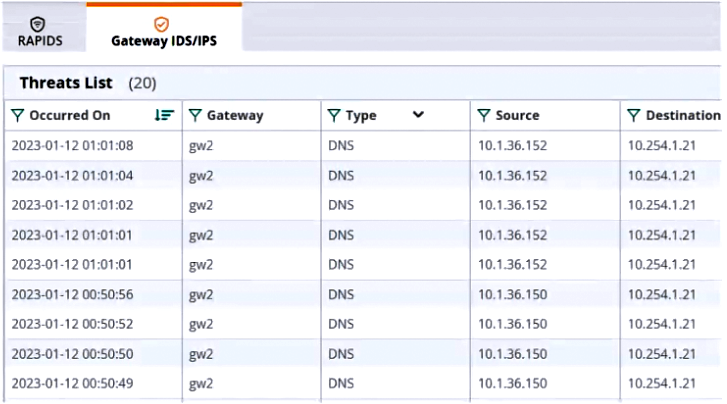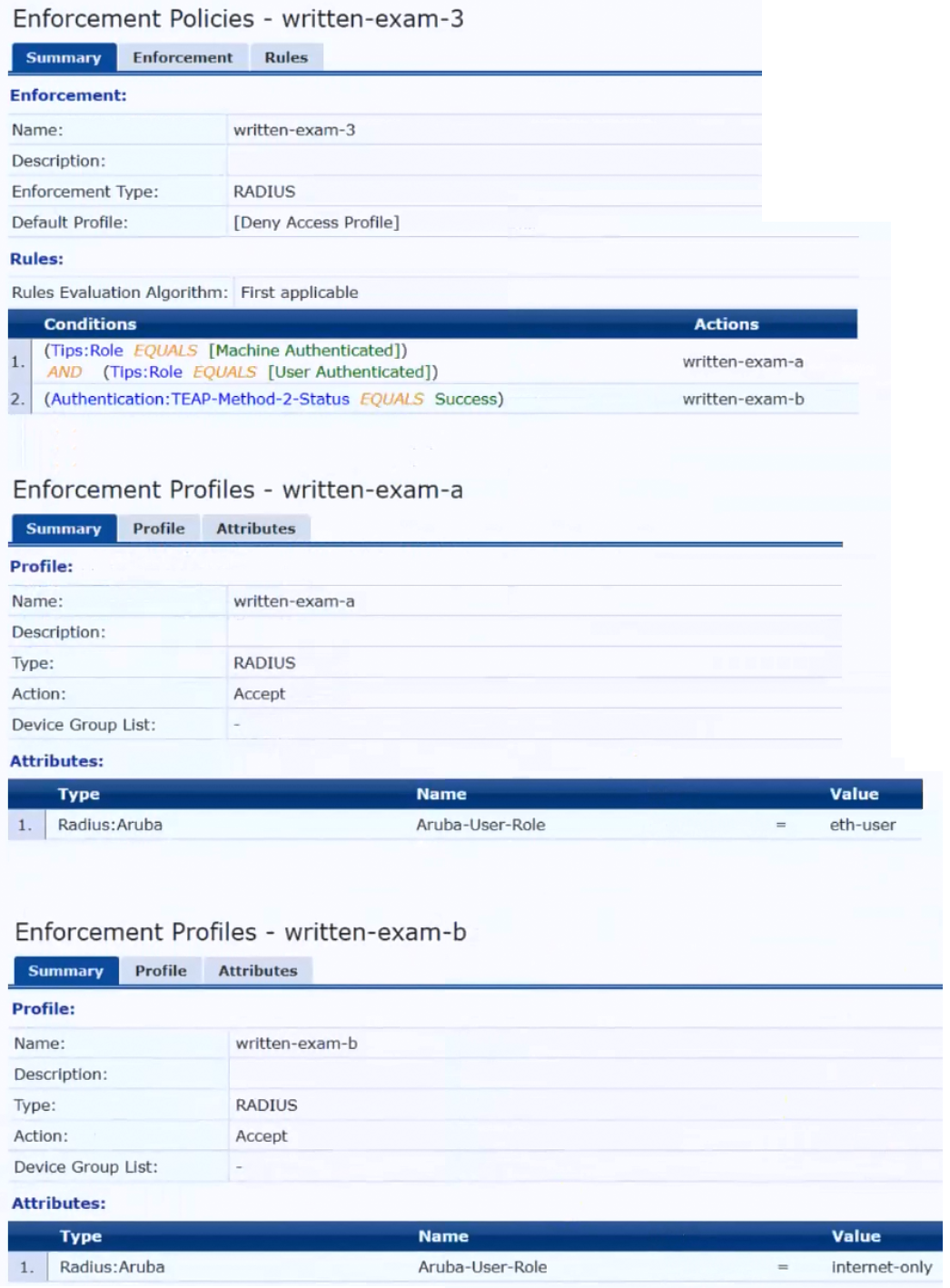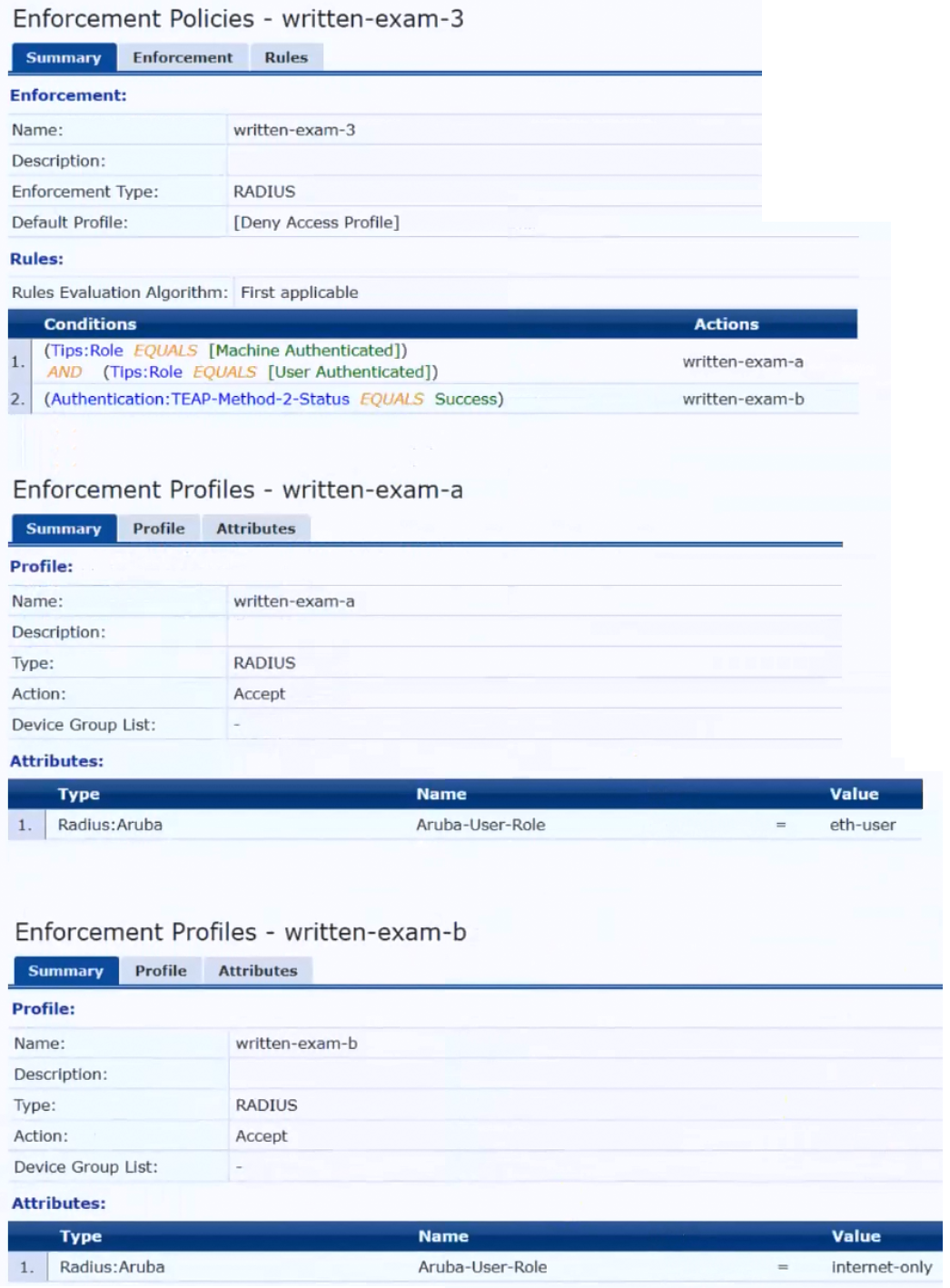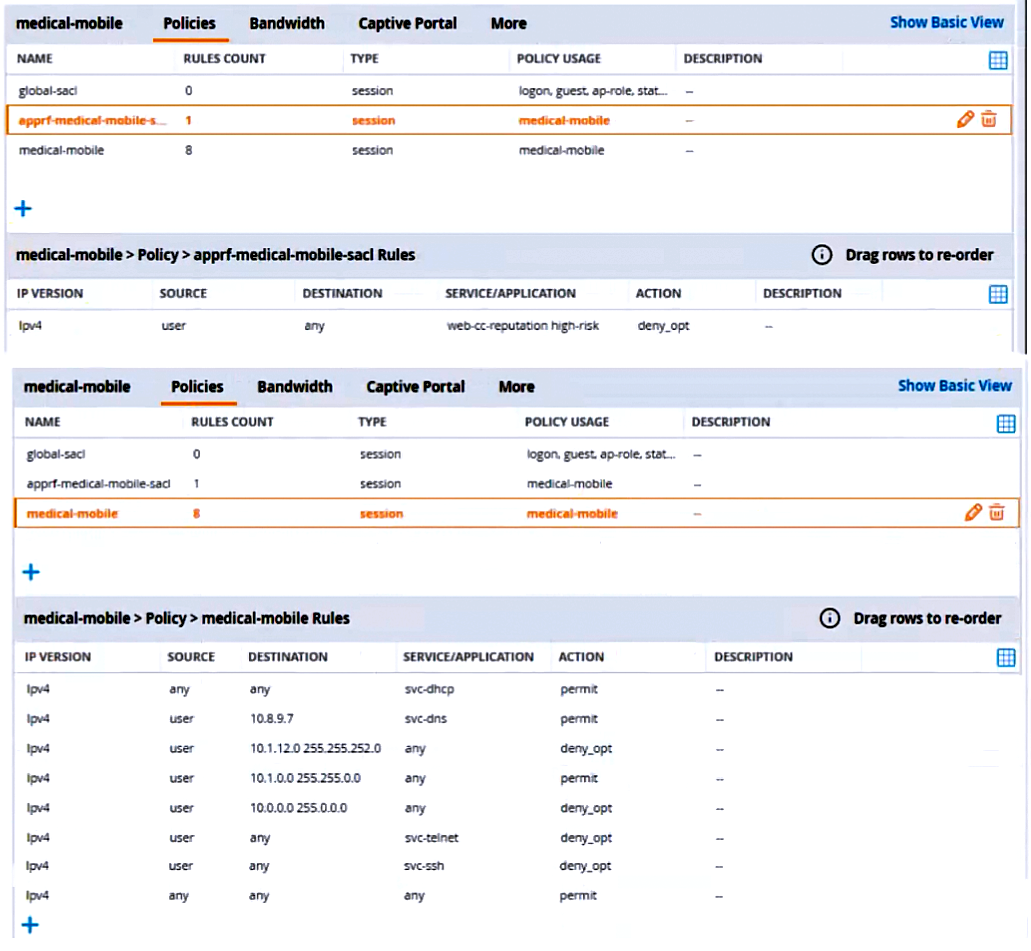HP HPE6-A84 Exam Practice Questions (P. 3)
- Full Access (60 questions)
- Six months of Premium Access
- Access to one million comments
- Seamless ChatGPT Integration
- Ability to download PDF files
- Anki Flashcard files for revision
- No Captcha & No AdSense
- Advanced Exam Configuration
Question #11
- AUse of IPv6 addressing instead of IPv4 addressing
- BLack of encryption
- CUse of less common protocols such as SNAP
- DPeriodic transmission of small, identically sized packets
D

Hi! Do you need help with this question ?
- Why isn't the A the right answer?
- Traducir la pregunta al español
Contributor get free access to an augmented ChatGPT 4 trained with the latest IT Questions.
Question #12
A hospital has an AOS10 architecture that is managed by Aruba Central. The customer has deployed a pair of Aruba 9000 Series gateways with Security licenses at each clinic. The gateways implement IDS/IPS in IDS mode.
The Security Dashboard shows these several recent events with the same signature, as shown below:

Which step could give you valuable context about the incident?
- AView firewall sessions on the APs and record the threat sources’ type and OS.
- BView the user-table on APs and record the threat sources’ 802.11 settings.
- CView the RAPIDS Security Dashboard and see if the threat sources are listed as rogues.
- DFind the Central client profile for the threat sources and note their category and family.
D

Hi! Do you need help with this question ?
- Why isn't the A the right answer?
- Traducir la pregunta al español
Contributor get free access to an augmented ChatGPT 4 trained with the latest IT Questions.
Question #13
A customer has an Aruba ClearPass cluster. The customer has AOS-CX switches that implement 802.1X authentication to ClearPass Policy Manager (CPPM).
Switches are using local port-access policies.
The customer wants to start tunneling wired clients that pass user authentication only to an Aruba gateway cluster. The gateway cluster should assign these clients to the “eth-internet" role. The gateway should also handle assigning clients to their VLAN, which is VLAN 20.
The plan for the enforcement policy and profiles is shown below:

The gateway cluster has two gateways with these IP addresses:
• Gateway 1
o VLAN 4085 (system IP) = 10.20.4.21
o VLAN 20 (users) = 10.20.20.1
o VLAN 4094 (WAN) = 198.51.100.14
• Gateway 2
o VLAN 4085 (system IP) = 10.20.4.22
o VLAN 20 (users) = 10.20.20.2
o VLAN 4094 (WAN) = 198.51.100.12
• VRRP on VLAN 20 = 10.20.20.254
The customer requires high availability for the tunnels between the switches and the gateway cluster. If one gateway falls, the other gateway should take over its tunnels. Also, the switch should be able to discover the gateway cluster regardless of whether one of the gateways is in the cluster.
What is one change that you should make to the solution?
- AChange the ubt-client-vlan to VLAN 13.
- BConfigure edge ports in VLAN trunk mode.
- CRemove VLAN assignments from role configurations on the gateways.
- DConfigure the UBT solution to use VLAN extend mode.
C

Hi! Do you need help with this question ?
- Why isn't the A the right answer?
- Traducir la pregunta al español
Contributor get free access to an augmented ChatGPT 4 trained with the latest IT Questions.
Question #14
A customer has an Aruba ClearPass cluster. The customer has AOS-CX switches that implement 802.1X authentication to ClearPass Policy Manager (CPPM).
Switches are using local port-access policies.
The customer wants to start tunneling wired clients that pass user authentication only to an Aruba gateway cluster. The gateway cluster should assign these clients to the “eth-internet" role. The gateway should also handle assigning clients to their VLAN, which is VLAN 20.
The plan for the enforcement policy and profiles is shown below:

The gateway cluster has two gateways with these IP addresses:
• Gateway 1
o VLAN 4085 (system IP) = 10.20.4.21
o VLAN 20 (users) = 10.20.20.1
o VLAN 4094 (WAN) = 198.51.100.14
• Gateway 2
o VLAN 4085 (system IP) = 10.20.4.22
o VLAN 20 (users) = 10.20.20.2
o VLAN 4094 (WAN) = 198.51.100.12
• VRRP on VLAN 20 = 10.20.20.254
The customer requires high availability for the tunnels between the switches and the gateway cluster. If one gateway falls, the other gateway should take over its tunnels. Also, the switch should be able to discover the gateway cluster regardless of whether one of the gateways is in the cluster.
Assume that you are using the “myzone” name for the UBT zone.
Which is a valid minimal configuration for the AOS-CX port-access roles?
- Aport-access role eth-internet gateway-zone zone myzone gateway-role eth-user
- Bport-access role internet-only gateway-zone zone myzone gateway-role eth-internet
- Cport-access role eth-internet gateway-zone zone myzone gateway-role eth-internet vlan access 20
- Dport-access role internet-only gateway-zone zone myzone gateway-role eth-internet vlan access 20
B

Hi! Do you need help with this question ?
- Why isn't the A the right answer?
- Traducir la pregunta al español
Contributor get free access to an augmented ChatGPT 4 trained with the latest IT Questions.
Question #15
A customer requires these rights for clients in the “medical-mobile” AOS firewall role on Aruba Mobility Controllers (MCs):
Permitted to receive IP addresses with DHCP
Permitted access to DNS services from 10.8.9.7 and no other server
Permitted access to all subnets in the 10.1.0.0/16 range except denied access to 10.1.12.0/22
Denied access to other 10.0.0.0/8 subnets
Permitted access to the Internet
Denied access to the WLAN for a period of time if they send any SSH traffic
Denied access to the WLAN for a period of time if they send any Telnet traffic
Denied access to all high-risk websites
External devices should not be permitted to initiate sessions with “medical-mobile” clients, only send return traffic.
The line below shows the effective configuration for the role.

There are multiple issues with this configuration. What is one change you must make to meet the scenario requirements? (In the options, rules in a policy are referenced from top to bottom. For example, “medical-mobile” rule 1 is “ipv4 any any svc-dhcp permit,” and rule 6 is “ipv4 any any any permit’.)
- AApply the “apprf-medical-mobile-sacl" policy explicitly to the “medical-mobile” user-role under the “medical-mobile” policy.
- BIn the “medical-mobile” policy, change the action for rules 2 and 3 to reject.
- CIn the “medical-mobile” policy, move rule 5 under rule 6.
- DIn the “medical-mobile” policy, change the subnet mask in rule 5 to 255.255.252.0.
D

Hi! Do you need help with this question ?
- Why isn't the A the right answer?
- Traducir la pregunta al español
Contributor get free access to an augmented ChatGPT 4 trained with the latest IT Questions.
All Pages
